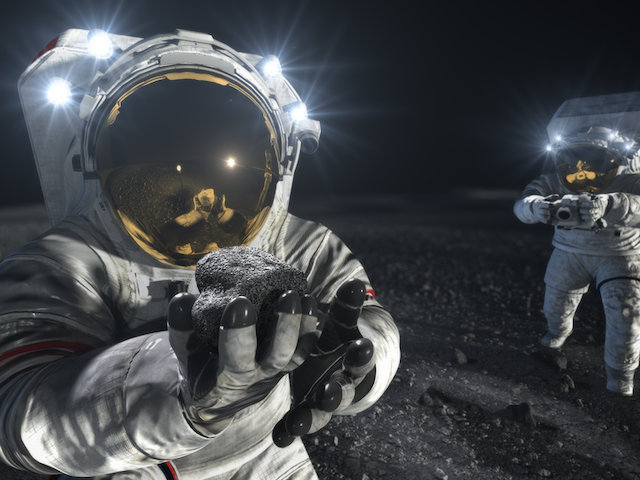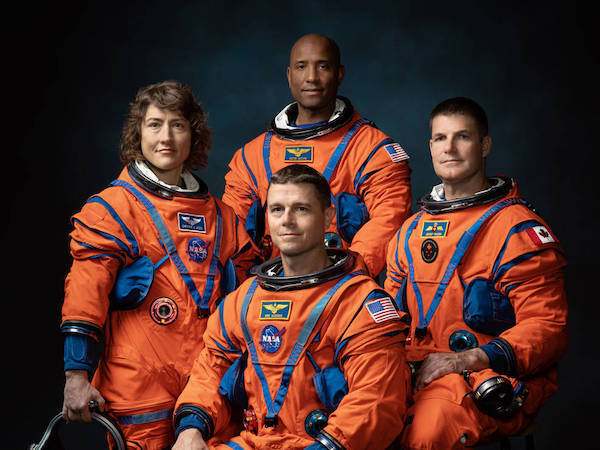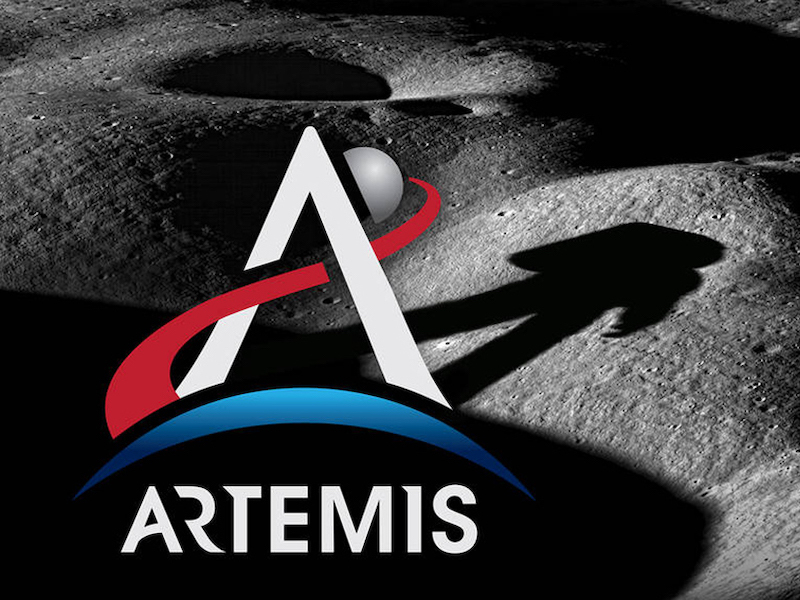News | March 8, 2018
NASA Outlines New Lunar Science, Human Exploration Missions

Artist's concept of the Lunar Orbital Platform-Gateway. Credit: NASA
NASA is focused on an ambitious plan to advance the nation’s space program by increasing science activities near and on the Moon and ultimately returning humans to the surface.
As part of the President’s fiscal year 2019 budget proposal, NASA is planning a new Moon-focused exploration campaign that starts with a series of progressive commercial robotic missions.
“The Moon will play an important role in expanding human presence deeper into the solar system,” said Bill Gerstenmaier, associate administrator of the Human Exploration and Operations Mission Directorate at NASA Headquarters in Washington. “Coupled with the capabilities enabled by the Lunar Orbital Platform-Gateway, these missions will usher in a new era of exploration of the Moon and its resources, and provide a training ground for human missions to Mars.”
Commercial Landers
NASA plans to enlist a series of commercial robotic landers and rockets to meet lunar payload delivery and service needs. The agency will release a draft request for proposals this spring to initiate commercial lunar payload service contracts for surface delivery as early as 2019.
This solicitation, which will be open to all domestic commercial providers, complements ongoing NASA efforts to stimulate the emerging space economy. The Lunar CATALYST partnerships have already helped advance commercial capabilities to deliver small payloads to the lunar surface.
NASA is also interested in understanding and developing requirements for future human landers. By developing landers with mid-size payload capacity (500 to 1,000 kg – roughly the size of a smart car) first, this will allow evolution toward large-scale human-rated lunar landers (5,000 to 6,000 kg). Additionally, this class of lander can support larger payloads to the Moon addressing science and exploration objectives such as sample return, resource prospecting, demonstrations of in-situ resource utilization (ISRU), and others.
The agency will seek information from industry later this month for larger lander development, and determine how best to proceed with potential partnerships. NASA plans to follow that effort with a solicitation to enable the partnerships between NASA and industry. The first of two mid-size commercial missions to the Moon for NASA could come as early as 2022.
Science and Technology
The campaign – supported by science and technology projects and activities – is designed to enable seamless collaboration across NASA, leveraging agency, commercial and international partnerships toward a common goal.
“This agency-wide strategy will inspire and enable humankind to take the next bold steps to our lunar neighbor,” said Thomas Zurbuchen, associate administrator of the Science Mission Directorate at NASA Headquarters. “While American innovation will lead the way, partnerships and opportunities with U.S. industry and other nations will be expanded.”
NASA’s intrepid robotic explorers have and continue to provide vital data to support future exploration plans. The agency’s Lunar Reconnaissance Orbiter continues to study the lunar surface from orbit, providing data needed for future robotic and human landers. Plans are underway now for an enhanced lunar sample analysis campaign to ensure data from existing Apollo samples is widely available to support future exploration. NASA also is providing ShadowCam as a U.S. contribution to the Korea Aerospace Research Institute’s first lunar exploration mission, Korea Pathfinder Lunar Orbiter (KPLO). ShadowCam will map the reflectance within the permanently shadowed regions to search for evidence of frost or ice deposits.
A new analysis of data from two lunar missions found evidence that the Moon’s water could be widely distributed across the surface rather than confined to a particular region or type of terrain. The findings could help researchers understand the origin of the Moon’s water and its feasibility and accessibility as a resource.
NASA plans to use a number of CubeSats to affordably study the lunar environment. Thirteen CubeSats will launch on Exploration Mission-1, the agency’s first integrated flight of the Space Launch System and Orion. Four of them, LunaH-Map, Lunar IceCube, Lunar Flashlight, and LunIR, will use state-of-the art instrumentation to investigate the abundance, locations, and composition of Moon resources.
Building on knowledge obtained from lunar orbit, NASA will develop new science and technology payloads, to be delivered by commercial lunar landers. The opportunity to deploy instruments directly on the lunar surface will improve our understanding of the Moon and its resources, and enable the testing of new technologies for exploration.
The Lunar Orbital Platform-Gateway will serve NASA and its commercial and international partners as a uniquely valuable staging point and communications relay for exploration and science missions in deep space. The agency recently hosted a workshop to discuss how the gateway could facilitate new scientific discoveries in a variety of ways, including support to lunar sample return missions and other lunar surface science activities.
“Together, science and technology communities will continue studies of the Moon, with a focus on identifying the lunar resources important for exploration to our Earth companion and into the solar system and beyond,” said Zurbuchen.






